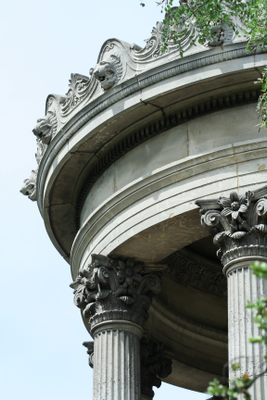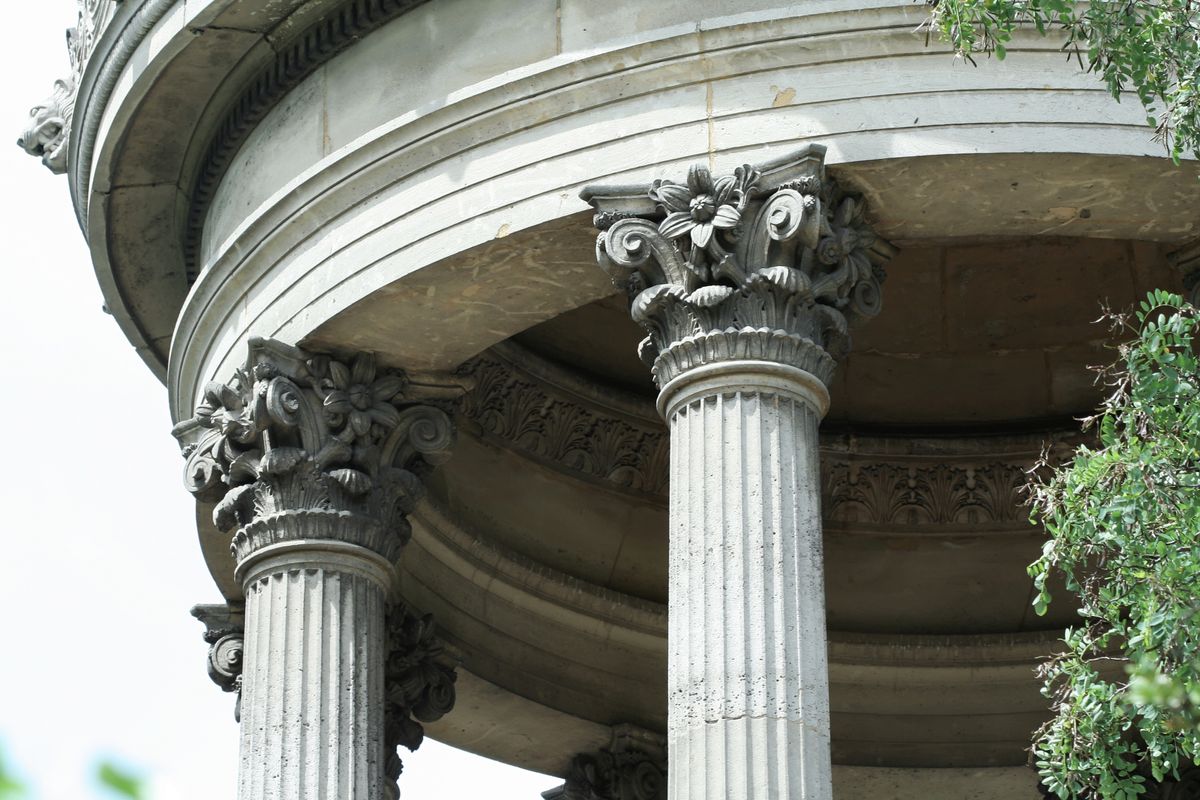About
The Temple de la Sybille is a Roman-style monument situated at the highest point in Buttes-Chaumont Park, perched some 165 feet above the lake at its heart. It offers stunning panoramic views of Paris, making the hike to the top totally worthwhile.
The temple was designed by city architect Gabriel Davioud during the late 19th century. It sits atop the Île du Belvédère, a human-made rocky island with jagged edges nestled between two bridges over the lake, from which visitors can access the island.
These two bridges are quite distinct from one another. One, a 200-foot-long suspension bridge, was designed by none other than Gustave Eiffel, of Eiffel Tower fame. It extends to the Île de la Belvédère from the upper rim road of the park. The other is a 39-foot-long masonry bridge, unfortunately dubbed the "suicide bridge" by Parisians due to all of the people who have died by suicide from it. (It is now covered with mesh to prevent further tragedies.)
After climbing to the top of the long stairs leading to the temple, you're rewarded with splendid vistas of all of Paris below. And there is the temple itself, which was inspired by the Temple of Vesta in Tivoli, revered by 17th and 18th-century Italian painters. These days, it has been tagged with graffiti, as you'll see when you get up close. So, although the views of Paris and Sacre Coeur are just stunning from the top, the view of the temple itself is probably more romantic from the shores of the lake below.
In Greek mythology, the Sybille was an oracle, a woman known for her powers of divination, and a priestess of Apollo. She appears in legends from many different cultures, though the Romans were surely referencing the Greek version of Sybille.
The park was originally designed and built in the late 1800s, during the reign of Napoleon III. The challenge faced by its designer, Jean-Charles Adolphe Alphand, was to transform a toxic waste site and limestone quarry into a habitable, 61-acre public park. The Temple de la Sybille was to be the Parc's most visible and iconic feature, and it did not disappoint.
The park opened with the unveiling of the temple on April 1, 1867, which was also the opening of the Paris Universal Exposition or Second World's Fair.
Update as of January 2023: The two bridges to the island as well as the two waterfalls are currently closed to the public as they are unsafe.
Related Tags
Know Before You Go
There are several different entrances to the Parc des Buttes-Chaumont, where the temple is located. Entrances are located at these addresses: 1-7, rue Botzaris 2-6b, rue Manin 55, rue de Crimée 42, avenue Simon-Bolivar. The three closest metro stations for accessing the park are: Buttes-Chaumont or Botzaris on lign 7 bis Laumière on lign 5. The park is open until midnight, seven days a week.
Community Contributors
Added By
Published
September 12, 2019
Sources
- https://en.parisinfo.com/paris-museum-monument/71468/Parc-des-Buttes-Chaumont
- https://www.paris.fr/equipements/parc-des-buttes-chaumont-1757
- https://en.wikipedia.org/wiki/Parc_des_Buttes_Chaumont
- https://www.timeout.com/paris/en/attractions/parc-des-buttes-chaumont
- https://www.paris.fr/equipements/parc-des-buttes-chaumont-1757#acces
- https://en.wikipedia.org/wiki/Parc_des_Buttes_Chaumont
- https://en.parisinfo.com/paris-museum-monument/71468/Parc-des-Buttes-Chaumont
- https://www.parisinsidersguide.com/parc-des-buttes-chaumont.html
- https://fr.wikipedia.org/wiki/Exposition_universelle_de_1900
- https://en.wikipedia.org/wiki/Sacré-Cœur,_Paris
- https://www.histoires-de-paris.fr/temple-sybille-buttes-chaumont/











































